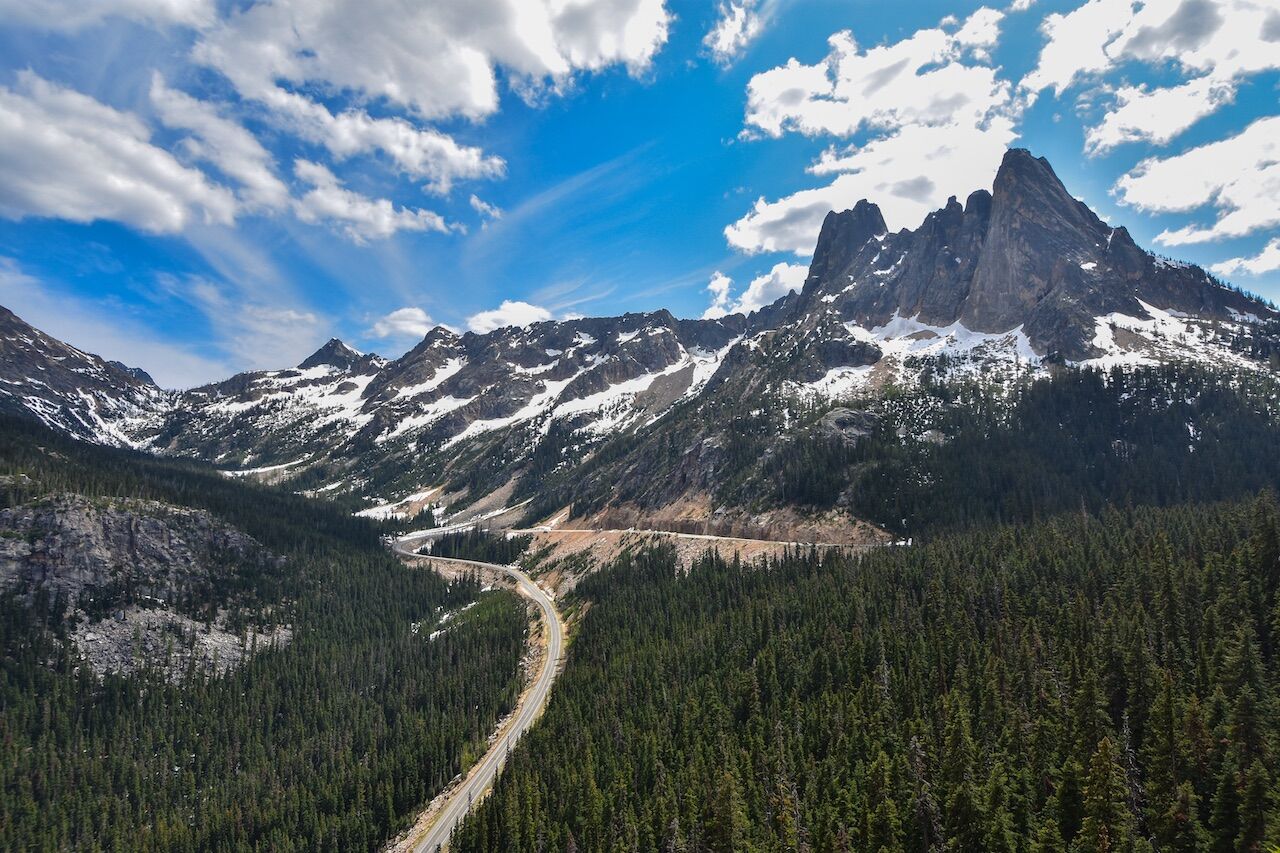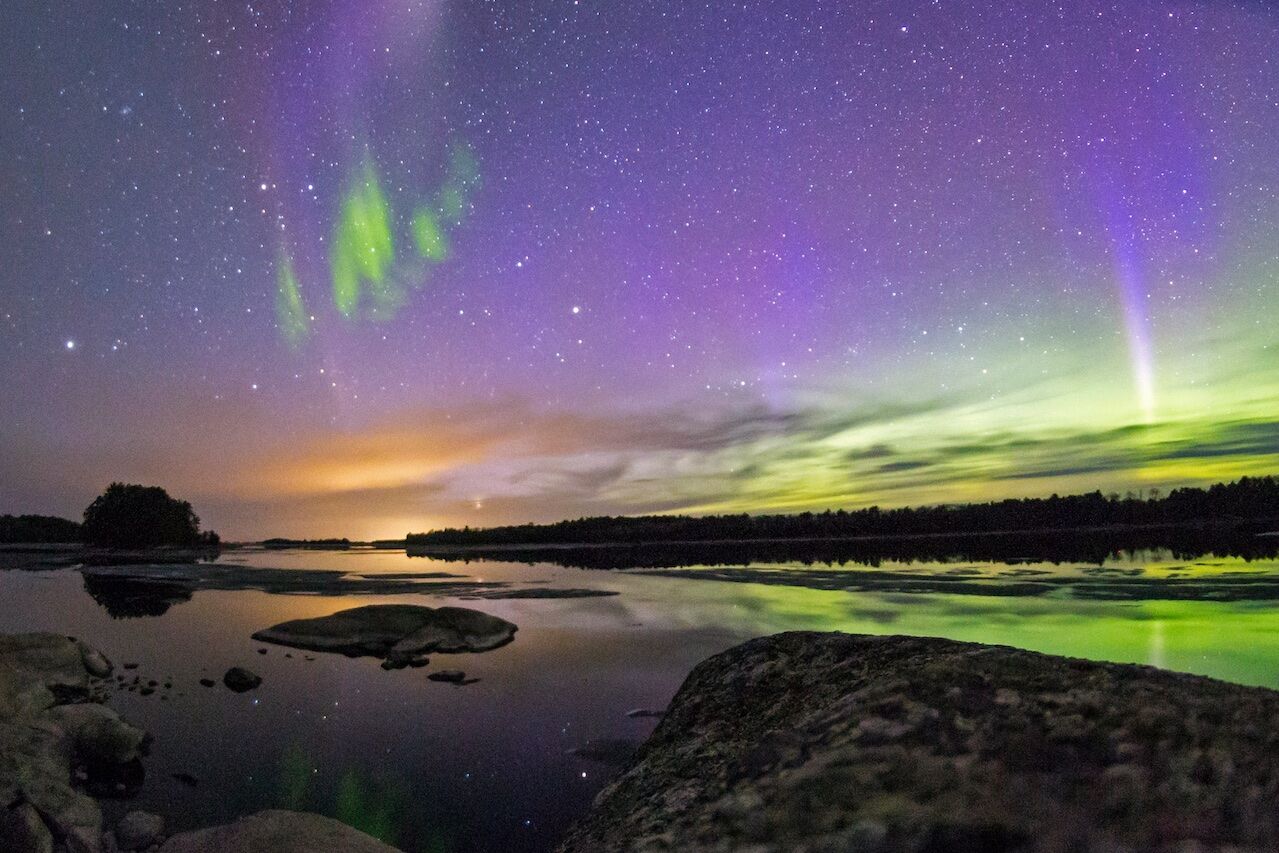Exploring America’s national parks should feel akin to a safari: windows-down scenic drives, wildlife-rich hikes, and plenty of time spent in nature. But at popular parks like Yellowstone and Yosemite, where summer visitors number in the millions, it can mean the opposite: queueing in traffic, praying for parking spots, and struggling for elbow room.
Thankfully, certain lesser-known parks still promise wild serenity, and getting there is as fun as it is easy when you’re driving the Jeep® Wrangler 4xe. What vehicle other than a Wrangler would you take on a safari, anyway?
The national parks profiled below are out-of-this-world, under-the-radar, and absolutely worth the drive this summer. Let them inspire you, and then use that inspiration to build your Jeep Wrangler 4xe.
BUILD YOUR WRANGLER 4xe for the ultimate national park road trip.
1. North Cascades National Park

Photo: PNW Park Ranger/Shutterstock
Drive from: Seattle
One-way mileage: 107
Just 2.5 hours from downtown Seattle, North Cascades National Park — a rugged, vertical wilderness of glaciers, mountains, and fjord-like lakes — sees roughly 40,000 visitors every year. To put that in perspective: That’s about how many visitors Yellowstone might get in a single day.
If you like the sound of that, it’s time to hit the North Cascades Scenic Highway (State Route 20) in your Wrangler with the top down and the wind in your hair. Open from May to November, the roughly 30-mile drive winds with old-growth forests, cascading waterfalls, narrow glacial lakes, and jagged peaks around every curve. Catch the park’s iconic scene at Diablo Lake, where forested mountains descend straight into the powder-blue water.
But at some point, it’s imperative to get off the main drag. (Most of the park is unpaved beyond SR-20, so you’ll be glad for a rock-climber like the Wrangler 4xe.) For backcountry adventure, dust up your tires on 12 miles of gravel to the Cascade Pass trailhead. Then, dust up your boots on another 12 miles — this time, the round-trip hike to the base of Sahale Glacier.
2. Voyageurs National Park

Photo: Blue Barron Photo/Shutterstock
Drive from: Minneapolis
One-way mileage: 306
Due north of Minneapolis, the land slowly turns to water. Voyageurs National Park abuts the Canadian border and is roughly one-third H2O, an inland sea dotted with ancient islands (2.8 billion years old), boreal forests, rocky cliffs, marshy wetlands, and some of the most pristine waters in the country.
Though you’ll eventually want to set out in a canoe, kayak, or houseboat — bring your own or arrange a rental, ideally well in advance — the park also offers 27 miles of hiking trails and nearly 300 campsites. If you’re willing to tack on a short paddle, you might just find your own private island.
But even those who stay on two feet or four wheels should stay overnight, because extra magic strikes in the dark. Imagine driving along Highway 11, following the moonlit water. You push a button to retract your Power-Top roof, and voila — say hello to millions of stars. You might even catch a glimpse of the glittering ribbons of the northern lights.
3. Capitol Reef National Park

Photo: Lars Bentrup/Shutterstock
Drive from: Salt Lake City
One-way mileage: 224
The crowds lining up at nearby Arches National Park are missing the wonders in store at Capitol Reef. Deep in Utah’s canyon country, this national park holds cliffs, canyons, domes, natural bridges, and 100 miles of the Waterpocket Fold, a literal wrinkle in time and earth.
Most visitors will take the 7.9-mile scenic drive — starting at the park visitor center — for a quick frontcountry adventure, tacking on a stop in Fruita for petroglyphs, old homestead orchards, and the park’s signature pies. But if you’ve got 4WD and high clearance, you can hit portions of the park most visitors never see, such as the magnificent Cathedral Valley. Remote and rugged with ancient volcanoes and eroding rock walls, the valley’s 57.6-mile gravel loop leads to overlooks and trails offering million-dollar views you can keep to yourself. It’s similar to the well-trafficked Monument Valley — sans the people or pavement.
Tip: The 2024 Jeep Wrangler 4xe comes with a two-year trial subscription to Trails Offroad. Drivers get access to more than 200 off-road destinations and trail guides, viewed on the vehicle’s 12.3″ touchscreen — because a landscape this expansive deserves the largest-in-class display to date. You’ll have no trouble finding your trailhead, no matter how off-grid you go.
4. Pinnacles National Park

Photo: Zack Frank/Shutterstock
Drive from: San Francisco
One-way mileage: 145
The newest national park on this list, Pinnacles was designated in 2013 for its rare landscape of chaparral and oaks, canyons and caves, and volcanic formations that bubble up in towers, needles, and chutes. There’s nowhere quite like it in California or beyond.
Pinnacles’ biggest claim to fame, though, is found in the sky: The park is home to the critically endangered California condor, the largest bird in North America. Previously extinct in the wild, the condor is on the comeback, thanks in large part to spots like Pinnacles National Park.
For an adventure impossible anywhere else, here’s what to do: Hit Highway 146 at sunrise — it’s a winding one-lane road, so put the top down, breathe in the piney air, and enjoy. You’ll pass the western entrance and land at the Chapparal parking area, where you can set out toward the park’s High Peaks region. (Parking here might be a touch trickier than elsewhere on this list, so try to arrive before 10 AM to snag a good spot.) The ancient lava formations are extra impressive, but send your gaze up. You just might spot the condor, surveying its kingdom, back where it belongs.
Cruising through the park in zero-emissions mode, you’ll be a lot like the condor in your Wrangler 4xe — gliding quietly through the open air while respecting the extraordinary Pinnacles landscape. Just remember to keep your phone handy using a dashboard mount to make sure you never miss a photo opp.

